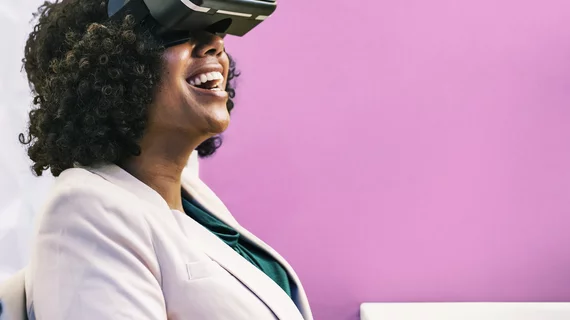Augmented reality allows 3D visualization of myocardial scar during ablation
An augmented reality (AR) technique involving 3D visualization of myocardial scar can assist physicians in evaluating and treating cardiac damage during electrophysiological interventions like ventricular tachycardia (VT) ablation, researchers reported in PLOS One this month.
Senior author Jihye Jang, a PhD candidate at Beth Israel Deaconess Medical Center in Boston, and colleagues said they launched their study to develop a more workable framework for 3D holographic visualization of late gadolinium enhancement (LGE) images on AR platforms. Jang et al. said the detailed scar descriptions generated by LGE imaging are particularly useful for planning and guiding scar-related interventions like VT ablation.
“Augmented reality allows true 3D visualization that provides 3D depth perception and opens up the possibility for interacting with the medical data without physical contact to assist while maintaining a sterile environment and reducing the risk of infection,” they wrote.
The team used Microsoft’s HoloLens for their project—a 579-gram AR glass screen worn like a diving mask over a physician’s eyes. Jang and coauthors imaged myocardial scar in a handful of swine models using a high-resolution 3D LGE sequence, and the 3D-rendered LGE model was generated and visualized on the HoloLens. A doctor, then, could interact with that medical data without physically touching a screen or mouse, compromising the sterility of their environment.
Jang’s team applied the AR technique to five animals who underwent controlled infarction and electrophysiological study, according to the paper. An operator and mapping specialist for each rated the utility of the HoloLens on a six-item usefulness scale ranging from 1 to 7.
The operators rated their HoloLens experience a 5.8 out of 7, while the mapping specialists rated the software a close 5.5.
“HoloLens will provide the operator a higher level of control and visibility and reduce the frustrations of miscommunication between the operator and mapping specialist by offering touchless interaction,” Jang et al. wrote. “Furthermore, if integrated with real-time electroanatomic data and the catheter position, it will improve image-based guidance and VT ablation outcome.”
The authors said their framework allows physicians to explore their patient’s data in an immersive, 3D environment. They said their report is one of the first of its kind, and future work will aim to merge scar information with electrophysiological data for an even more insightful experience.
“Holographic visualization of the LGE images allows to attain touchless interaction with the clinical data in sterile environments, thereby permitting the operator to have increased control and manipulation over pre- or intra-procedural information,” they wrote. “Due to a robust gesture tracking using using a depth sensor and camera, a user can also operate a HoloLens with a gloved and soiled hand.
“The availability of such AR technologies to potentially improve procedural efficacy may be useful in the future for complex procedures, and the proposed framework can also be applied in other interventional and surgical procedures.”

